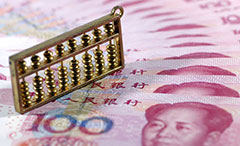SOEs to face tighter financial oversight
2019-01-17
China Daily
China will tightly control State-owned enterprises’ new investments in financial businesses, standardize the development of financial derivatives, and strictly prohibit any speculation in 2019, said the country’s top SOE regulator.
The policy announcement came after the State-owned Assets Supervision and Administration Commission’s annual meeting held in Beijing from Jan 14 to Jan 15.
To ensure the safety of State assets and crack down on illegal and irrational activities, SASAC said it will deploy more resources to increase control of centrally administered SOEs’ financial businesses and debt risk this year.
The government will expand the scope of mixed-ownership reform in key areas, establish a group of State-owned capital investment and operation companies, and continuously promote the professional integration of SOEs in power generation, nonferrous metals, steel, offshore engineering equipment, environmental protection, duty-free goods and other fields this year, according to SASAC.
The authorities have been working to halt SOEs’ investment in overseas real estate development, entertainment and sport projects, and intensifying efforts to root out weak and unprofitable companies since 2017.
The government this year is pushing SOEs to focus on their pillar businesses, instead of getting involved in other, unrelated fields, especially the global financial markets, said Li Jin, chief researcher at the China Enterprise Research Institute.
SASAC announced a new batch of 11 pilot SOEs, including China National Building Material Group Co and China Resources (Holdings) Co, that will establish independent financial and investment arms to better manage their assets and serve the real economy in late December.
These groups are mainly from the manufacturing, service, healthcare and emergency response sectors.
Ten pilot SOEs are running independent financial and investment companies, after being selected in 2016 when China began to tackle SOEs’ structural, operational and debt issues. The country now has 21 such centrally administered SOEs.
“As the financial structure of centrally administered SOEs improves, they will see constant rises in their ability to ward off risks, their growth quality and efficiency, as well as their core competitiveness,” said Ma Jun, director at the Enterprise Research Institute of the State Council’s Development Research Center.
Zhu Bixin, president of China Chengtong Holdings Group, a State-owned investment and asset-operating company, said the group’s next move is to carry out market-oriented equity management and operation, including actively making use of SOEs’ stock transactions on the Hong Kong Stock Exchange and introducing overseas capital into SOE reform.
The revenues of China’s SOEs jumped 10.3 percent year-on-year to 54.8 trillion yuan ($8.11 trillion) in 2018. Their profits grew by 13.2 percent year-on-year to 3.4 trillion yuan.
The rises came from the stable progress advanced by supply-side structural reform and resource optimization, said SASAC in a statement on Wednesday.
Meanwhile, the sales revenues and profits of China’s 96 centrally administered SOEs came to 29.1 trillion yuan and 1.7 trillion yuan, respectively, up 10.1 percent and 16.7 percent.
In 2018, the debt-to-asset ratio of China’s centrally administered SOEs stood at 65.7 percent, 0.6 percentage point down from a year earlier.
SASAC said it will also encourage independent innovation and breakthroughs in key technologies, as well as promote the transformation and development of the manufacturing industry, according to the statement.


